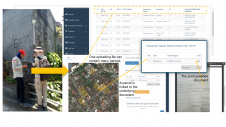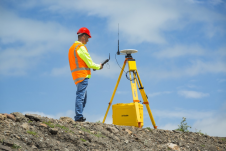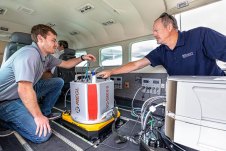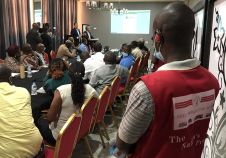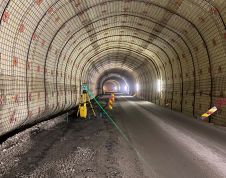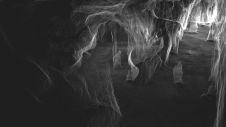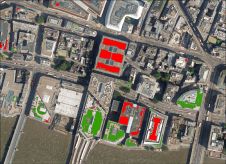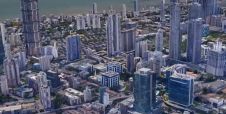地形激光测距和扫描:原则和加工
 由编辑单杰和查尔斯·k·托特编辑的这本新出版的书提供了一个全面和深入的处理激光雷达作为一个精确的,直接的方法,城市和森林地区的三维地理数据收集。共有29位作者,主要是欧洲和北美的学者,为这19章作出贡献。第1章和第4章讨论“受激辐射光放大”、激光测距和激光传感器校准的基本原理。随着技术的快速发展,这些对当代机载激光雷达系统和地面激光扫描仪的详细描述(分别在第2章和第3章)可能很快就会失传。它可能已经足够让读者参考发表在专业杂志上的定期产品调查。第3章是单独覆盖地面激光扫描仪,其他18章是专门针对机载激光雷达。第5章放大飞行时间激光雷达:唯一的激光测距原理使用在机载激光雷达。第6章,第8章和第9章涵盖了地理参考,条带调整和注册,以及质量方面。激光雷达系统每分钟发射数百万脉冲。为每个关联点分配大量的属性,如平面坐标、高度值、强度、镜像角度和返回数。 Efficient storage and smart management of the myriad data is thus essential, the subject of Chapter 10. One of the main geo-datasets generated from Lidar are digital terrain models (DTM), including surface- and elevation models: these refer to bare ground and require removal of unwanted points, such as those reflected from trees, buildings and other constructions. Hence automatic filtering and manual editing of Lidar point-clouds are crucially important - issues covered by Chapter 11. Determination of forest factors is a major use made of small-footprint airborne Lidar, the importance of which is growing, trees being repositories of carbon. Chapter 12 addresses forest inventory; the six authors are all from Finland, a country of which 70% is covered by forest. (Semi)automatic creation of 3D-city models requires data fusion, the topic of Chapter 13. Urban land cover consists predominantly of brick and concrete, and Chapters 15 to 19 on 3D building extraction provide in-depth insight concerning relevant ongoing research into automation of building reconstruction. This timely book provides a wealth of information on the most successful geo-data acquisition technology matured over the past decade.
由编辑单杰和查尔斯·k·托特编辑的这本新出版的书提供了一个全面和深入的处理激光雷达作为一个精确的,直接的方法,城市和森林地区的三维地理数据收集。共有29位作者,主要是欧洲和北美的学者,为这19章作出贡献。第1章和第4章讨论“受激辐射光放大”、激光测距和激光传感器校准的基本原理。随着技术的快速发展,这些对当代机载激光雷达系统和地面激光扫描仪的详细描述(分别在第2章和第3章)可能很快就会失传。它可能已经足够让读者参考发表在专业杂志上的定期产品调查。第3章是单独覆盖地面激光扫描仪,其他18章是专门针对机载激光雷达。第5章放大飞行时间激光雷达:唯一的激光测距原理使用在机载激光雷达。第6章,第8章和第9章涵盖了地理参考,条带调整和注册,以及质量方面。激光雷达系统每分钟发射数百万脉冲。为每个关联点分配大量的属性,如平面坐标、高度值、强度、镜像角度和返回数。 Efficient storage and smart management of the myriad data is thus essential, the subject of Chapter 10. One of the main geo-datasets generated from Lidar are digital terrain models (DTM), including surface- and elevation models: these refer to bare ground and require removal of unwanted points, such as those reflected from trees, buildings and other constructions. Hence automatic filtering and manual editing of Lidar point-clouds are crucially important - issues covered by Chapter 11. Determination of forest factors is a major use made of small-footprint airborne Lidar, the importance of which is growing, trees being repositories of carbon. Chapter 12 addresses forest inventory; the six authors are all from Finland, a country of which 70% is covered by forest. (Semi)automatic creation of 3D-city models requires data fusion, the topic of Chapter 13. Urban land cover consists predominantly of brick and concrete, and Chapters 15 to 19 on 3D building extraction provide in-depth insight concerning relevant ongoing research into automation of building reconstruction. This timely book provides a wealth of information on the most successful geo-data acquisition technology matured over the past decade.
山,J.,Toth,C.,C.(EDS),2009年,地形激光测距和扫描:原则和加工,CRC印刷机,泰勒和弗朗西斯集团的印记,ISBN:978-1-4200-5142-1(精装),590页,±EUR100, -













